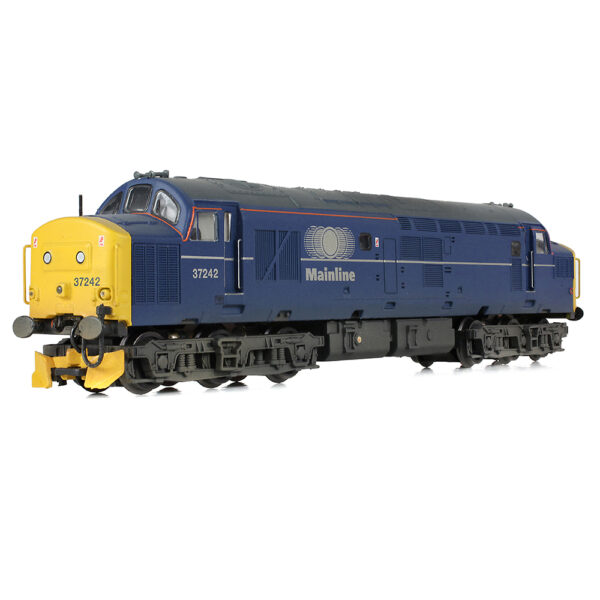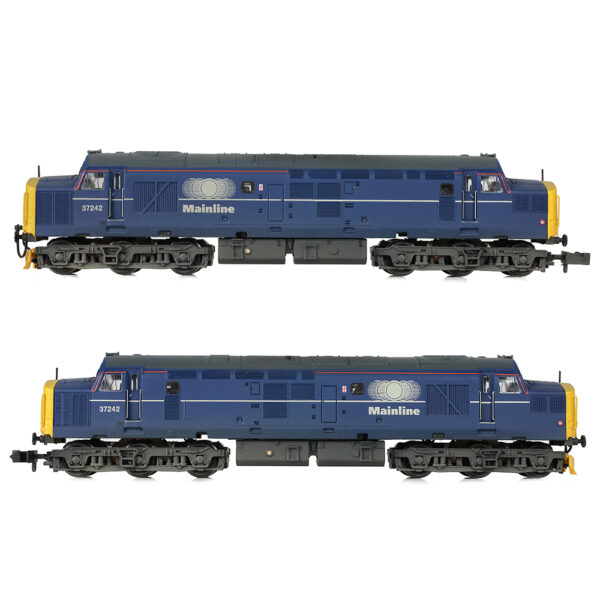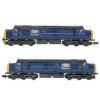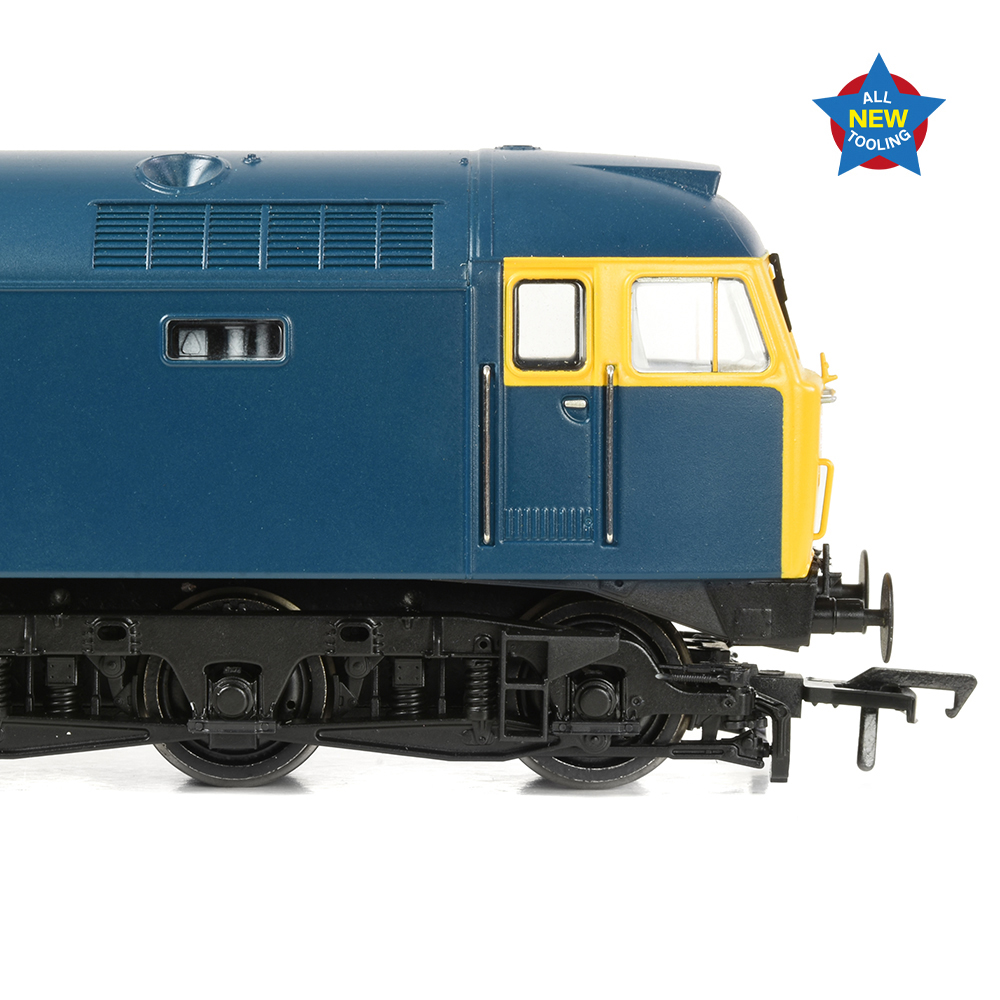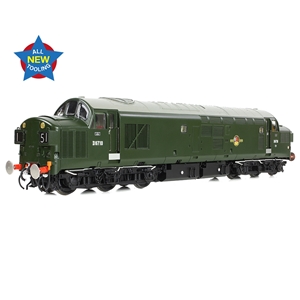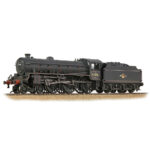The Class 37 is a favourite for many, and this Graham Farish model of No. 37242 in Mainline Freight Blue livery captures the look of a work-worn loco with its authentic weathered finish. Although depicting an original Class 37/0 machine, the headcode panels on this loco have been plated over and other later additions include the nose end aerials and the high intensity headlights, which are operational, of course.
MODEL FEATURES:
- Graham Farish N Scale
- Era 9
- Weathered Mainline Freight livery
- Running No. 37242
- Accessory Pack
- NEM Coupling Pockets
- Powerful 3 Pole Motor
- Directional Lighting
- Equipped with a 6 Pin DCC Decoder Socket – Recommend Decoder item No. 36-568A
- Length 125mm
CLASS 37 HISTORY
The British Rail 1955 Modernisation Plan paved the way for the large-scale replacement of steam traction with diesel locomotives, and one of the most successful diesel locomotive designs to result from this was the English Electric Type 3. These 1,700hp Types 3 diesel-electric locomotives were built at English Electric’s Vulcan Foundry and by Robert Stephenson & Hawthorns between 1960 and 1965, with 309 examples produced in total.
The class proved popular with railwaymen and so in 1985, a major refurbishment programme for the Class 37 locomotives was sanctioned to extend the working lives of 135 locomotives. Features of the refurbishment involved plating over the four-character head codes and sealing off the nose end communication doors. Dedicated freight locomotives received lower gearing to increase the tractive effort, and some were fitted with extra ballast or even more powerful engines. A new subclass was created for locomotives refurbished with Electric Train Heating (ETH) equipment, allowing their use on passenger trains the whole year-round.
With the sectorisation of British Rail taking hold in the early-1980s, the locomotives returned to traffic following refurbishment in a wide and diverse range of liveries. Passenger machines appeared in BR Blue Large Logo, InterCity and Regional Railways schemes to name just three, whilst freight engines received numerous varieties of Railfreight livery, Transrail, Mainline and Loadhaul. The Class continued to be widely used into the Privatisation-era, with examples operating for the likes of EWS, DRS, West Coast Railways and Colas, whilst others have received ‘retro’ heritag

